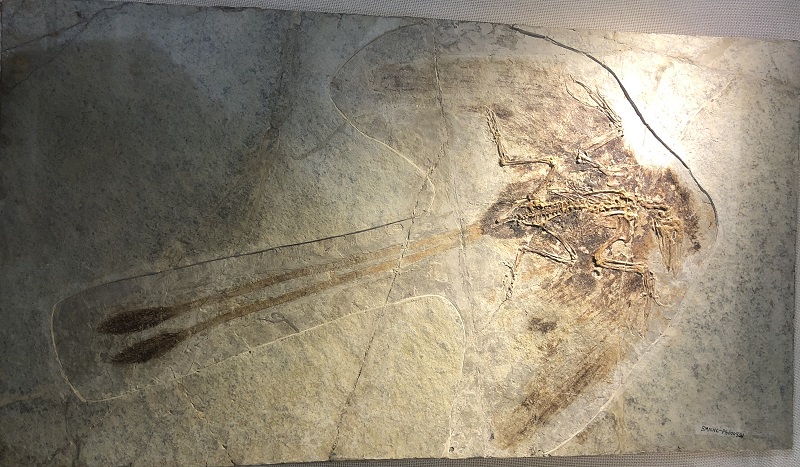BH Staff | May 19, 2023
Age and Locality: Early Cretaceous, Liaoning Province.

Confuciusornis sanctus is a significant species in the study of avian evolution. This prehistoric bird lived during the Early Cretaceous period, about 125 million years ago, in what is now Northeastern China. Named after the famous Chinese philosopher Confucius, Confuciusornis sanctus is one of the earliest known birds to have a beak, a feature that distinguishes modern birds from their dinosaur ancestors.
Confuciusornis sanctus was relatively small, with a body size comparable to that of a crow. One of its most distinctive features, besides the beak, was its pair of long, ribbon-like tail feathers, which were likely used for display rather than flight. This bird also had claws on its wings, suggesting that it might have been able to climb or grasp branches, combining perching and flight capabilities.
Scientifically, Confuciusornis sanctus provides crucial evidence about the transition from dinosaurs to birds, showcasing both primitive and advanced traits. Its skeletal structure includes both dinosaur-like characteristics and features typical of modern birds, such as a furcula (wishbone) for flight muscle attachment. The discovery of Confuciusornis sanctus has helped paleontologists understand more about the diversity of early birds and their evolutionary relationship with dinosaurs.
Fossils of Confuciusornis sanctus have been found in the Jehol Biota, a rich fossil site that has produced a wide array of well-preserved plants, invertebrates, and vertebrates, including numerous feathered dinosaurs. These fossils are invaluable for studying the ecology and evolution of life during the Cretaceous period in this region. The study of Confuciusornis sanctus and related species continues to shed light on the complex history of avian evolution, illustrating the gradual acquisition of flight-related adaptations and the emergence of birds as a distinct group from their theropod dinosaur ancestors.
